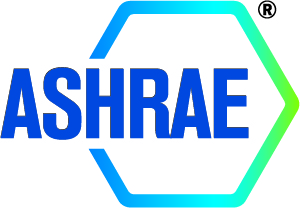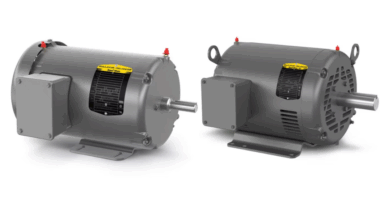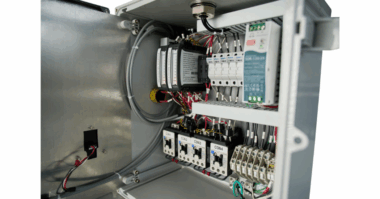The 2017 ASHRAE Winter Conference and the AHR Expo saw record attendance with industry collaboration a strong focus of the events.
The 2017 ASHRAE Winter Conference took place Jan. 28-Feb. 1 at Caesars Palace with the ASHRAE co-sponsored AHR Expo held Jan. 30-Feb. 1 at the Las Vegas Convention Center. The two events exceeded their record-breaking attendance from the Conference and Expo that were held in Las Vegas in 2011.
In total, 3,579 people attended the Conference, making it the most well attended Winter Conference in recent years. The attendees represented 58 countries and included 537 first-timers.
The AHR Expo set several records, including attendance of more than 68,000 registered visitors and exhibitor personnel, as well as 500,159 square feet sold. The Show was by far the largest and best attended Expo in the Western states, with some 1,968 exhibiting companies.
The Conference also saw several collaborative efforts and agreements with associations and organizations from around the world.
“Partnering with allied organizations and associations better allows us to harness and adapt new technologies, which we can all use in working toward a more sustainable environment,” ASHRAE President Tim Wentz said. “By working together, we can create a worldwide best practices databank of innovative and successful technologies that can serve the built environment community.”
ASHRAE signed memoranda of understanding with several groups, including the United Nations Development Programme (UNDP), the Indian Society of Heating, Refrigerating and Air Conditioning Engineers (ISHRAE) and Association of German Engineers (VDI-GBG). The Society also signed a strategic partnership agreement with the Chartered Institution of Building Services Engineers (CIBSE) and the Federation of European Heating, Ventilation and Air-Conditioning Associations (REHVA). In addition, it updated its Work Plan with the United Nations Environmental Programme (UNEP).
As part of the event, the Clean Climate and Air Coalition (CCAC) held a Sustainable Technologies for Stationary Air Conditioning Workshop focused on climate-friendly and cost-effective air conditioning technologies. ASHRAE is an actor with CCAC.
At the Conference, Wentz provided updates on several Society initiatives and programs of importance to the industry.
Among them was creation of a new ‘ASHRAE University’ educational platform, which will locate all of ASHRAE’s educational products in one place where users can select the products to meet their professional goals. Additionally, a personal dashboard is built into the new platform allowing users to track their progress toward their goals. The new platform can be found at www.ashrae.org/elearning.
ASHRAE also has launched a new Technology Portal at www.ashrae.org/technologyportal. This gives ASHRAE members an easy, fast method of connecting to the latest information generated by ASHRAE’s research program. It serves a central body of knowledge for ASHRAE technology and research products. It provides access to more than 1,700 Journal articles published since 1997 and more than 600 final reports from ASHRAE research projects.
Wentz, an associate professor at the University of Nebraska – Lincoln, also shared an update on a new, online internship job board. The new internship portal is found on ASHRAE’s website at http://jobs.ashrae.org.
“I am big supporter of internship programs in that they are the easiest and most effective way to show students the importance of our work and why we are so passionate about what we do,” he said. “Check it out and start looking for the next generation of engineers for your firm.”
The Conference Bookstore featured several new standards of importance to the industry, including ANSI/ASHRAE/IES Standard 90.1-2016, Energy Standard for Buildings Except Low-Rise Residential Buildings, ANSI/ASHRAE 15-2016, Safety Standard for Refrigeration Systems, and its sister standard, ANSI/ASHRAE 34-2016, Designation and Safety Classification of Refrigerants, as well as User’s Manuals for ANSI/ASHRAE Standard 62.1-2016, Ventilation for Acceptable Indoor Air Quality and ANSI/ASHRAE Standard 62.2-2016, Ventilation and Acceptable Indoor Air Quality in Residential Buildings.
The ASHRAE Learning Institute saw overall record attendance with top attended courses being Variable Refrigerant Flow System: Design & Applications, Designing High-Performance Healthcare HVAC Systems, Understanding & Designing Dedicated Outdoor Air Systems, Laboratory Design: The Basics and Beyond, and Designing Toward Net-Zero Energy Commercial Buildings.
The Technical Program featured some 350 presentations and 300 speakers. Top attended sessions included Blue Is the New Green: The Water-Energy “Next Is,” Did It Really Work: Theory vs. Practice in Residential HVAC, Hydronic Water Flow Measurement, Recent Research in Data Center Cooling, When Good Valve Sizing Goes Bad, What Fire and Safety Engineers Have Learned Since the MGM Grand Fire in Las Vegas and What Are Present Day Fire and Life Safety Codes and Applications, Fresh Insights on Building Automation: A Seminar by the YEA Group, Modern Optimization Techniques for Hydronic Systems in Data Centers, Advancements in Ground Source Heat Pump Design, Energy Management: A Crucial Component of Operations and Maintenance, Commissioning a Central Chilled Water Plant and Data Driven Energy Auditing, Measurement and Verification.
The 2017 ASHRAE Annual Conference will take place June 24-28 in Long Beach, Calif., with the 2018 Winter Conference Jan. 20-24, and the AHR Expo, Jan. 22-24, in Chicago, Ill.
ASHRAE, founded in 1894, is a global society advancing human well-being through sustainable technology for the built environment. The Society and its more than 57,000 members worldwide focus on building systems, energy efficiency, indoor air quality, refrigeration and sustainability. Through research, standards writing, publishing, certification and continuing education, ASHRAE shapes tomorrow’s built environment today. More information can be found at www.ashrae.org/news.




